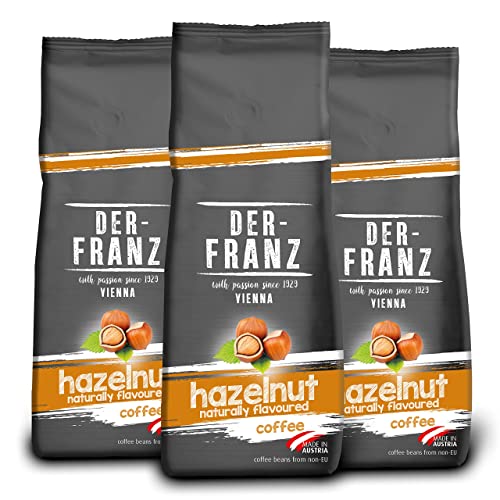Which Coffee Beans Are The Best: It's Not As Expensive As You Think

Which Coffee Beans Are the Best?
The type of beans you select can make all the difference when it comes to making a great cup. Each one has a distinct flavor that is complemented by a wide range of food and drink recipes.
Panama is the leading country with its unique Geisha beans. These beans are highly evaluated in cupping tests, and they are also quite expensive at auction. Ethiopia and, particularly the Yirgacheffe, isn't far behind.
1. Geisha Beans from Panama
If you're searching for the finest coffee beans around the globe, look at Geisha beans from Panama. Geisha beans are highly prized for their unique aroma and flavor. These rare beans, which are grown at high altitudes undergo an unusual process that gives them their distinctive flavor. The result is a cup that is smooth and rich in flavor.
The Geisha coffee plant is indigenous to Ethiopia, but was first introduced in Panama in 1963. Geisha coffee has been known to win contests due to its taste and prestige. Geisha beans can be costly due to the amount of labor needed to grow them. Geisha coffee plants are more difficult to grow because they require higher elevations and special climate conditions.
Geisha beans are also very delicate and should be handled with great care. They should be sorted with care and carefully prepared to roast. Otherwise, they can become acidic and bitter.
The Janson Coffee Farm is located in Volcan. The farm is committed to protecting the environment, and is a specialist in producing high-quality coffee. They utilize solar panels to generate energy, recycle water and waste materials, and use enzyme microbes to improve soil. They also plant trees and utilize recycled water to wash. The coffee they make is a Washed Geisha and was awarded the highest score in a Panama Coffee Competition.

2. Ethiopian Coffee
Ethiopia is a huge coffee producer with a long tradition of producing some of the best coffees. Ethiopia is the fifth largest producer of coffee in the world. Their beans are appreciated for their distinctive fruity, floral flavor profiles. Contrary to other coffees, Ethiopians taste their best when they are roast to a medium or even a light roast. This allows the delicate floral notes to be retained while highlighting their citrus and fruity flavors.
Sidamo beans, famous for their crisp acidity is among the top around the world. However, other coffees like Yirgacheffe or Harar, are also highly regarded. Harar is the most famous and oldest coffee variety. It has a distinctive wine and mocha flavor. Coffees from the Guji region are also renowned for their distinctive flavors and a distinct Terroir.
Natural Process is another kind of Ethiopian coffee made through dry processing, instead of wet processing. The difference between the two methods is that wet-processing involves washing coffee beans, which tends to remove some of the sweetness and fruity flavor from the beans. Natural Ethiopian coffees that were processed weren't as popular than their washed counterparts. They were more often used to brighten blends rather than being offered on the market for specialty coffees. However, recent technological advances have enabled more natural Ethiopians.
3. Brazilian Coffee
Brazilian Coffee is a rich mixture of different varieties. It is distinguished by its low acidity and a silky body. It has sweet, mellow flavors and subtle chocolate notes. The flavors vary based on the region and state where it is grown. It is also known for its citrus and nutty notes. It is a great choice for those who prefer medium-bodied coffee.
Brazil is the world's biggest exporter and producer of coffee. Brazil produces more than 30 percent of the world's beans. Brazil's economy is heavily reliant on this huge agricultural sector. The climate is perfect for growing coffee in the country and there are 14 major coffee-producing regions.
The primary beans that are used in Brazilian coffee are Catuai, Mundo Novo, Obata, and Icatu. These are all varieties of Arabica coffee. There are also a lot of hybrids that include Robusta. Robusta is a kind of coffee bean that originated in Sub-Saharan Africa. It's not as tasty as Arabica coffee, however, it is much easier to grow and harvest.
quality coffee beans Coffeee is important to remember that slavery is a problem in the coffee industry. Slaves are subjected in Brazil to long and exhausting working hours, and could be denied adequate housing. The government has taken steps to address this issue and has instituted programs to assist coffee farmers pay their debts.
4. Indonesian Coffee
The finest coffee beans from Indonesia are renowned for their dark, strong flavor and earthy sour taste. The volcanic ash mixed into the soil gives them a robust body and low acidity, which make them ideal for blending with higher acidity beans from Central America and East Africa. They also do well with darker roasting. Indonesian coffees are rustic and complex in taste with notes of leather, wood tobacco, and ripe fruits.
Java and Sumatra are the two biggest coffee producing areas in Indonesia however, some coffee is also grown on Sulawesi and Bali. A lot of farms in this region use a wet-hulling process. This differs from the washed method utilized in the majority of the world. Coffee cherries are de-pulped followed by washing and drying. The hulling process reduces the amount of water that is present in the coffee, which could reduce the effect of rain on the final product.
One of the most adored and high-quality varieties of Indonesian coffee is Mandheling, which comes from the Toraja region. It is a robust coffee with hints of candied fruits and intense chocolate flavors. Other types of coffee from the region include Gayo and Lintong. These coffees are usually wet-hulled and have a full and smoky aroma.
